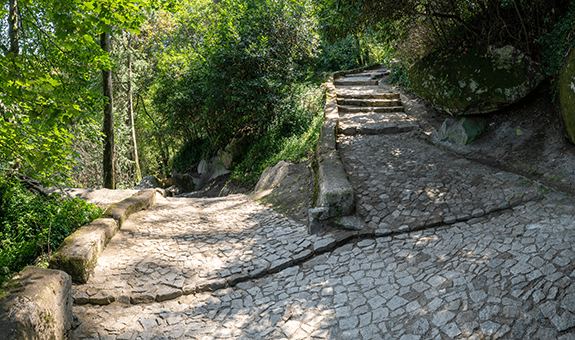June 21, 2022
A Different Ending

By Julie Gregory, Chief Health Liaison for Apollo Health
Ten years ago, when I asked my neurologist what I could do to reverse my symptoms of cognitive decline, he said, ”Good luck with that.” I was stunned. That was the best that the medical community had to offer? Like many, I was completely naive to the fact that there was no treatment for Alzheimer’s, which I soon learned was a progressive, fatal neurodegenerative disease. I turned to the Alzheimer’s Association for help; surely they — a patient advocacy group — would know more. Alas, no; their website confirmed what I had already learned and additionally informed me that most patients die within ten years of symptom onset. And yet, ten years later, I’m still here.
I share this bittersweet anniversary with you all to provide hope for our entire community. But I can’t celebrate this milestone without remembering all the people we’ve lost, those who believed nothing could be done and have succumbed. Statistics suggest that over ten years that number could have been as high as 16 million people globally. Their loss fuels me to spread my story and message far and wide. We must change this false paradigm of hopelessness into one of real hope.
Once I decided to challenge the medical community and fight, I poured every fiber of my being into learning what I could do to support my brain. At age 50, I figured that there must be something I could do to reverse my disease process. As an ApoE4 homozygote (I carry two copies of the gene most closely associated with Alzheimer’s), I banded together with other gene carriers and founded a non-profit called ApoE4.Info to search for answers. Our goal was to learn all that we could about ApoE4, specifically how we could intervene to mitigate the pathology associated with our high-risk gene that was associated not only with Alzheimer’s but also with heart disease and inversely correlated with longevity. Indeed, some researchers referred to the E4 gene as “the frailty gene.” We were citizen scientists with skin in the game searching for our own cure.
Over time, based on everything I was learning with my community, I hammered out a regimen that ultimately became the inception of what would become the Bredesen Seven. Keep in mind that this was several years before Dr. Bredesen had developed his protocol. We didn’t have the benefit of his wisdom. I’ll share some of my early dietary and lifestyle changes so you can see what it took to reverse my neurodegeneration process.
1. Nutrition This was an evolution. I started by getting rid of all processed and refined food. If it didn’t come straight from nature, I wasn’t going to eat it. This led to a heavily plant-based diet, with heaps of non-starchy vegetables from every color of the rainbow. For animal protein, I relied upon low mercury seafood for DHA and pastured eggs for choline. Over time, as I began to learn about the importance of ketosis as an alternate source of fuel, I began to shift my macronutrient ratios towards more fat and fewer carbohydrates. I leaned into the heart-healthy Mediterranean fats like high polyphenol extra virgin olive oil, avocados, nuts, seeds, olives, and fatty fish. I also began to increase the length of my daily fast to help me achieve ketosis
2. Exercise Prior to the onset of my cognitive decline, I had become insulin resistant. Despite exercising quite heavily most of my adult life, an acute case of mast cell activation necessitated my taking massive amounts of antihistamines, which contributed to weight gain. I dropped most of that weight fairly quickly by using a brutal bootcamp-style workout. At age 50, I competed with college-aged girls to do the most push-ups, burpees, run the fastest mile, etc. It was great exercise but also enormously stressful. Upon learning of my ApoE4 homozygote status, I recognized that I was more fragile, that there probably was a different, more nurturing way for me to exercise. I began taking long rambling walk/runs through nature. I would sometimes challenge myself cognitively as I trekked. I tried to repeat the alphabet backward; I counted back from 100 by 9s, 8s, 7s, etc. I spent hours in nature, soaking up the sun and glorifying in the wind, and every day I grew stronger — more centered, and resilient. I never walked less than four miles per day and often did significantly more.
3. Sleep Upon learning of my E4 status, I recognized that the time had come to make caring for myself a priority. Prior to this, I had burnt the candle at both ends and was naively prideful about my ability to run on four to five hours of sleep. No more! I began to go to bed earlier and ensured that I got seven to eight hours of quality restorative sleep every night. Interestingly, this was easier to achieve once I got into ketosis and began taking BHRT.
4. Stress As you can imagine, facing my mortality at age 50 was enormously stressful. For the first time in my life, I began to meditate. I adopted a daily practice where I turned inwards and found calm. I was able to quiet my mind by focusing on my breath. My meditations were infused with prayer. I used this time to be still and to find peace.
5. Brain Stimulation In retrospect, I did much of this wrong (too intensely) but still was able to glean benefit. I began daily brain training using the online program Lumosity. I spent about 30 minutes a day, sometimes longer, engaged in this intensive brain training. If I didn’t beat my score from the day before, I stuck with it until I did. I ultimately found that the skills I was learning from my brain training began to spill over to my everyday life.
6. Detox As I learned about the danger of toxins, I became very careful about what I put into my body and even on my body. I tried to eat USDA Organic when possible. I ensured that the fish I ate was wild-caught and sourced from clean water, and that my eggs were pastured. I ensured that the water I drank and the air that I breathed were clean and pure through filtration. I only used toiletries and cosmetics that were deemed safe by the Environmental Working Group’s SkinDeep Database.
7. Supplementation My supplementation program was loosely tied to my biomarker tracking. As I learned about various biomarkers that were associated with Alzheimer’s, I began to track them, including fasting glucose, insulin, hbA1c, homocysteine, vitamin D, etc. To reduce homocysteine, I began to take B12, folate, and B6; to increase vitamin D, I began to supplement with vitamin D3 (and K2 to protect my heart.) The first supplement that I trialed was curcumin. As a mast cell activation sufferer, it took three different tries before I found a brand that I could tolerate — CuraMed. Once I did, the effect was enormous. I felt my widespread body pain and fatigue lift. It was as if the sun had finally broken through the clouds. Over time, I began to slowly add one supplement at a time as it made sense to address my symptoms and support my cognition.
After applying all of these strategies for about a year, I repeated my cognitive testing, which had been in the mid-30th percentile. It had increased to
the mid-90th percentile for my age group. But it wasn’t until I read Dr. Bredesen’s seminal paper Reversal of cognitive decline: a novel therapeutic program that I fully acknowledged my transformation. His paper was an enormous confirmation of my healing journey. His work, which I’ve been honored to support, represents a turning point for the Alzheimer’s community. Later this month, the successful results of his first clinical trial will be shared in a peer-reviewed publication- another monumental turning point.
I recently got to celebrate my 60th birthday with my family. In the intervening years since I was told to give up, I got to see my son graduate from college, become an airline pilot, and get married. It’s been beautiful to see him become not only a husband but also a doggy daddy to an adorable rescue mutt named Milo. I feel like I’m getting a glimpse of what he might be like as a father. Had I believed in “luck,” as suggested by my neurologist, I likely would never have been able to take part in these milestones. In The First Survivors of Alzheimer’s, Dr. Bredesen introduces my story with a quote from Barbara Sher, “The amount of luck coming your way depends on your willingness to act.” Amen.
We now know what is possible, and we have the basic formula to get there. I have no doubt that the protocol will continue to evolve and become more streamlined as time moves on. Where I was once told that I’d likely be dead by now, I’m blessed to have a different ending. We all are medical pioneers, rewriting our stories for a different ending not only for ourselves but for our children and future generations.




